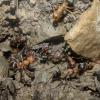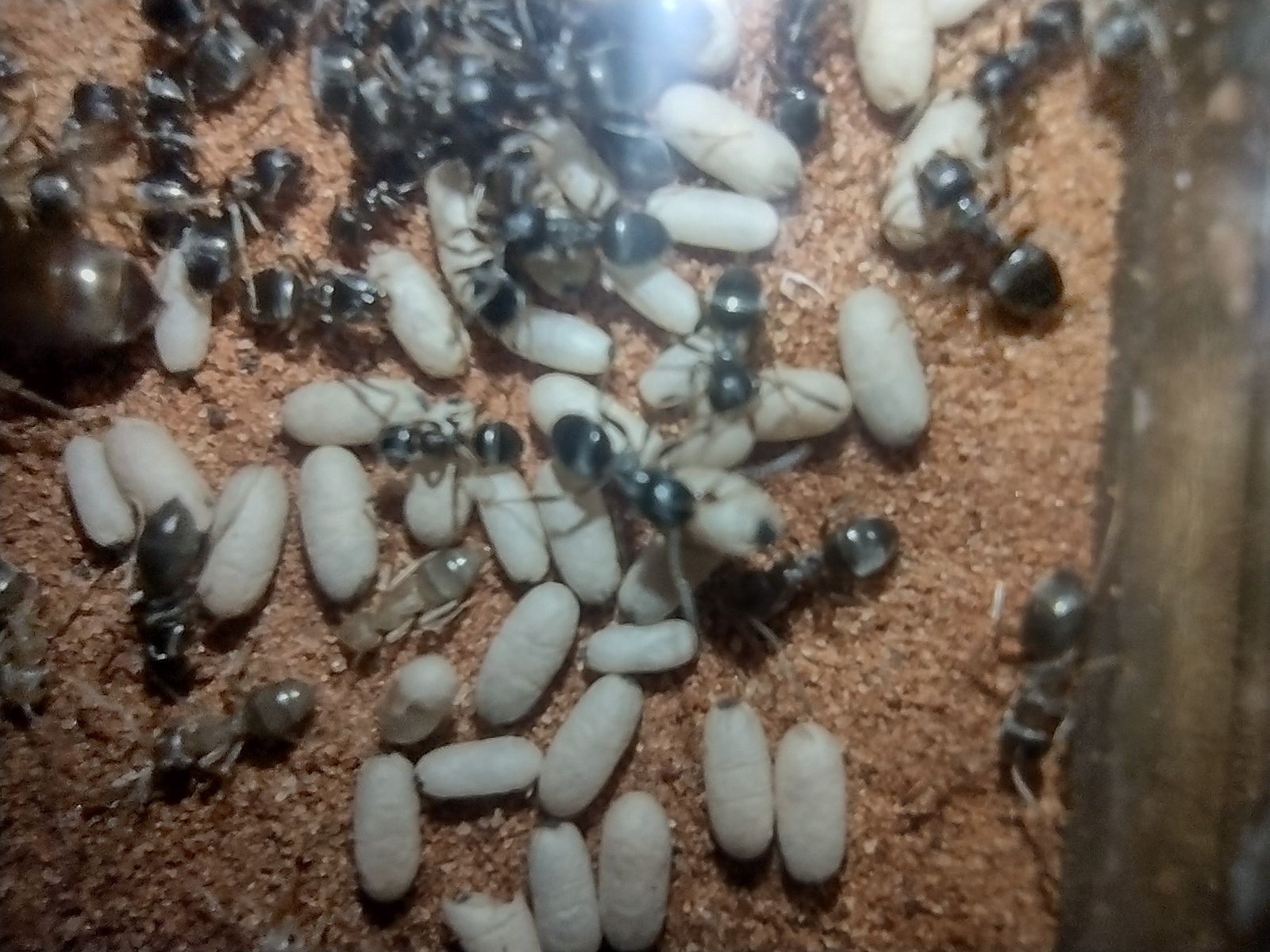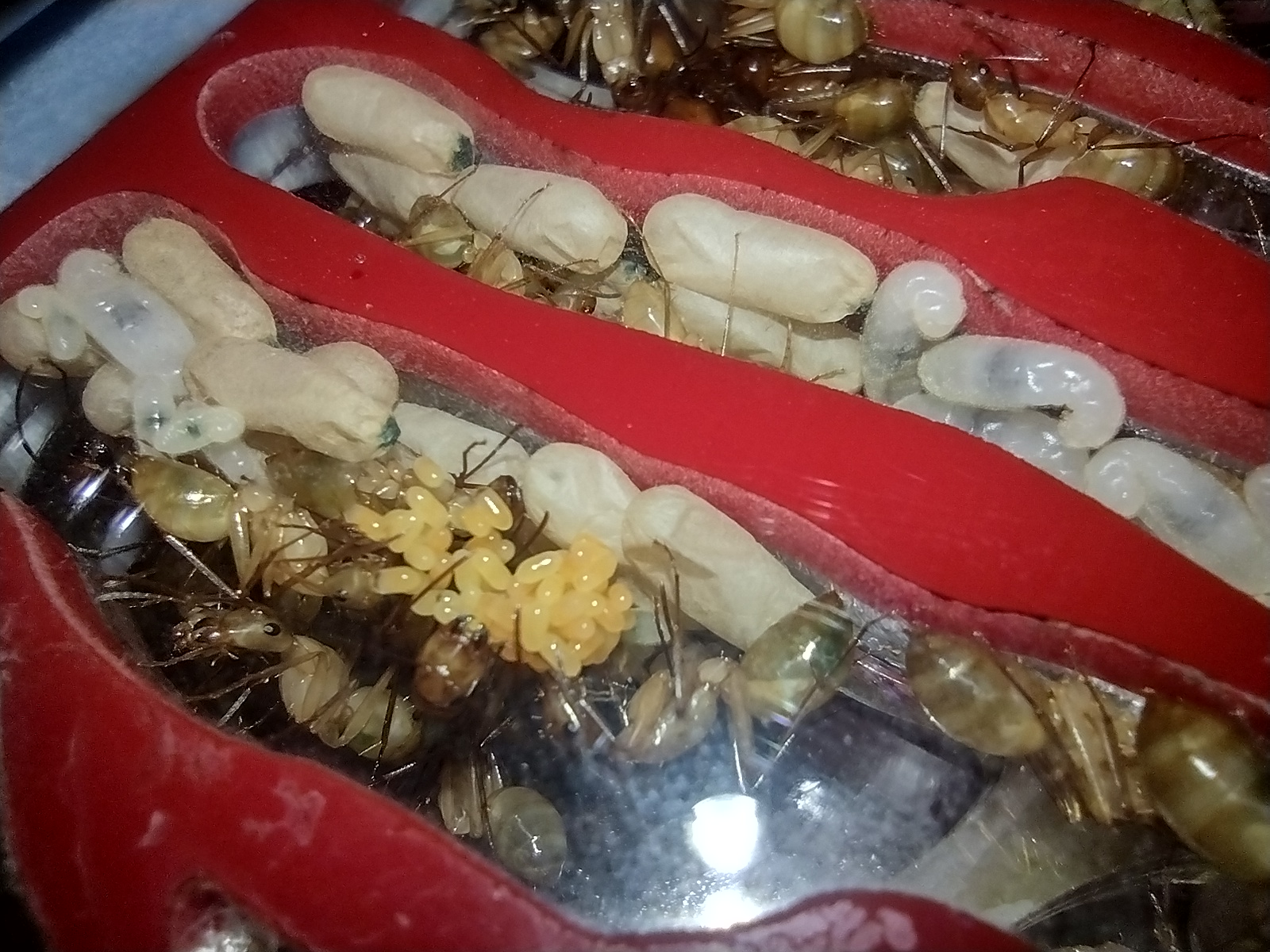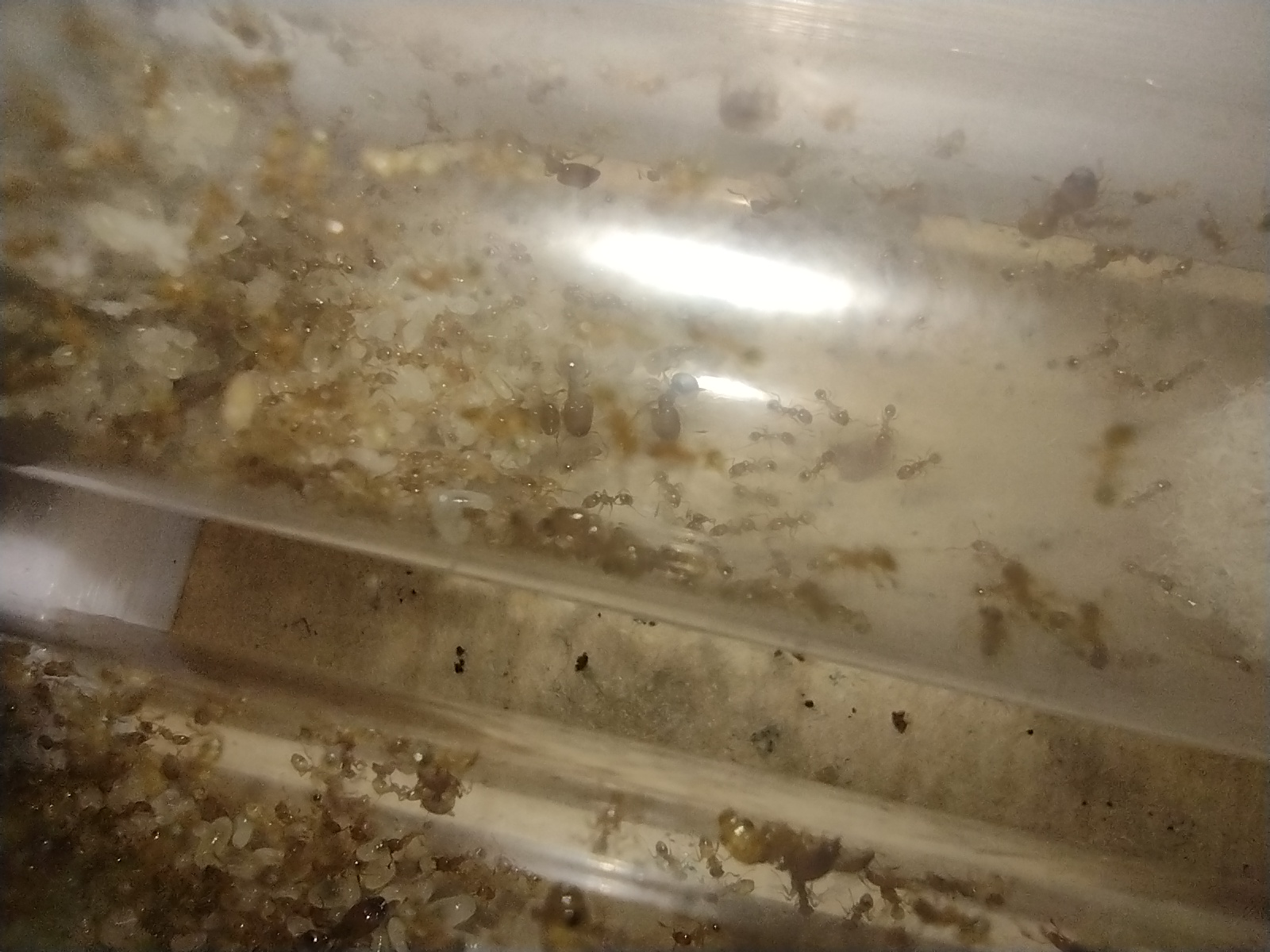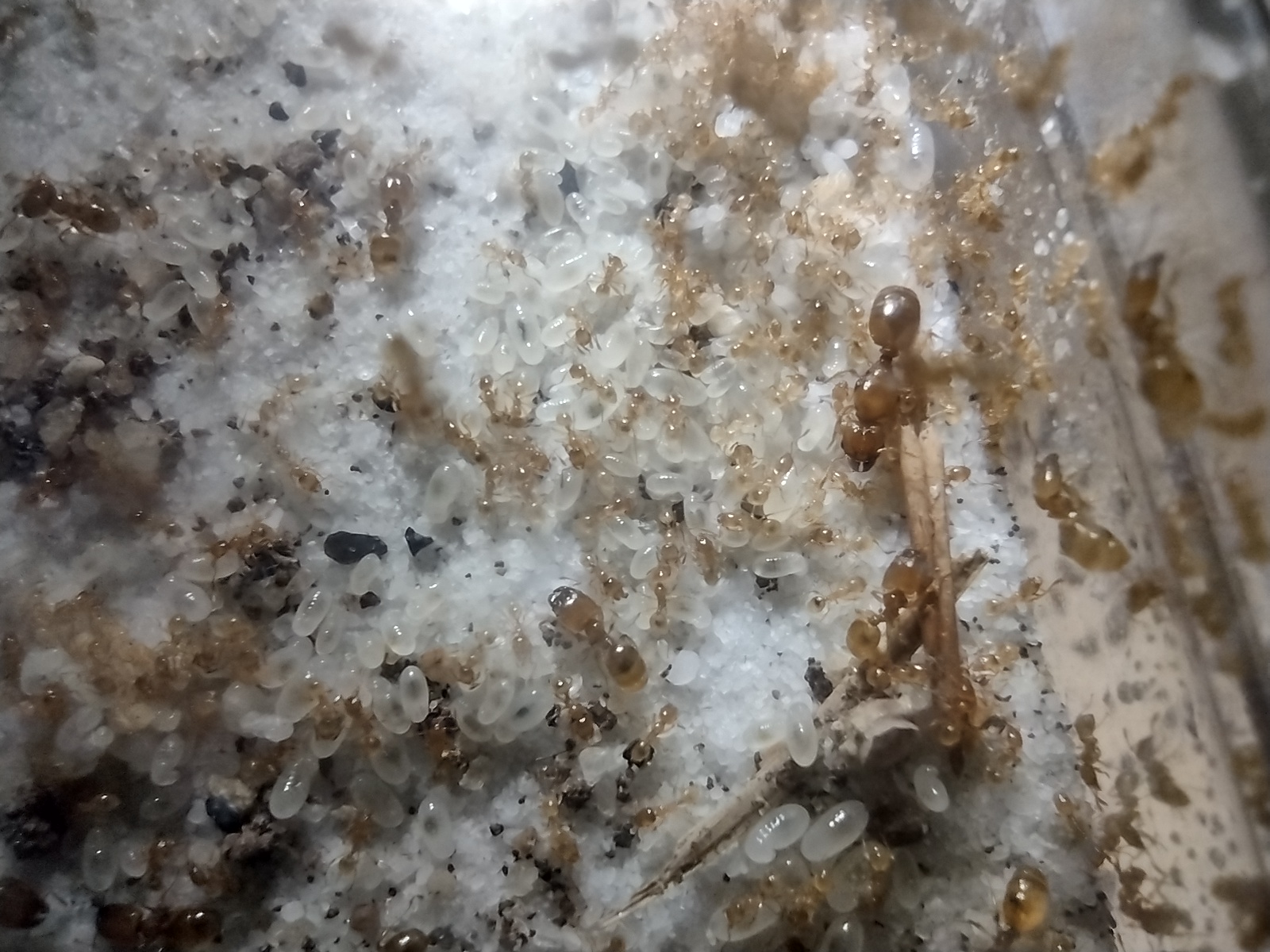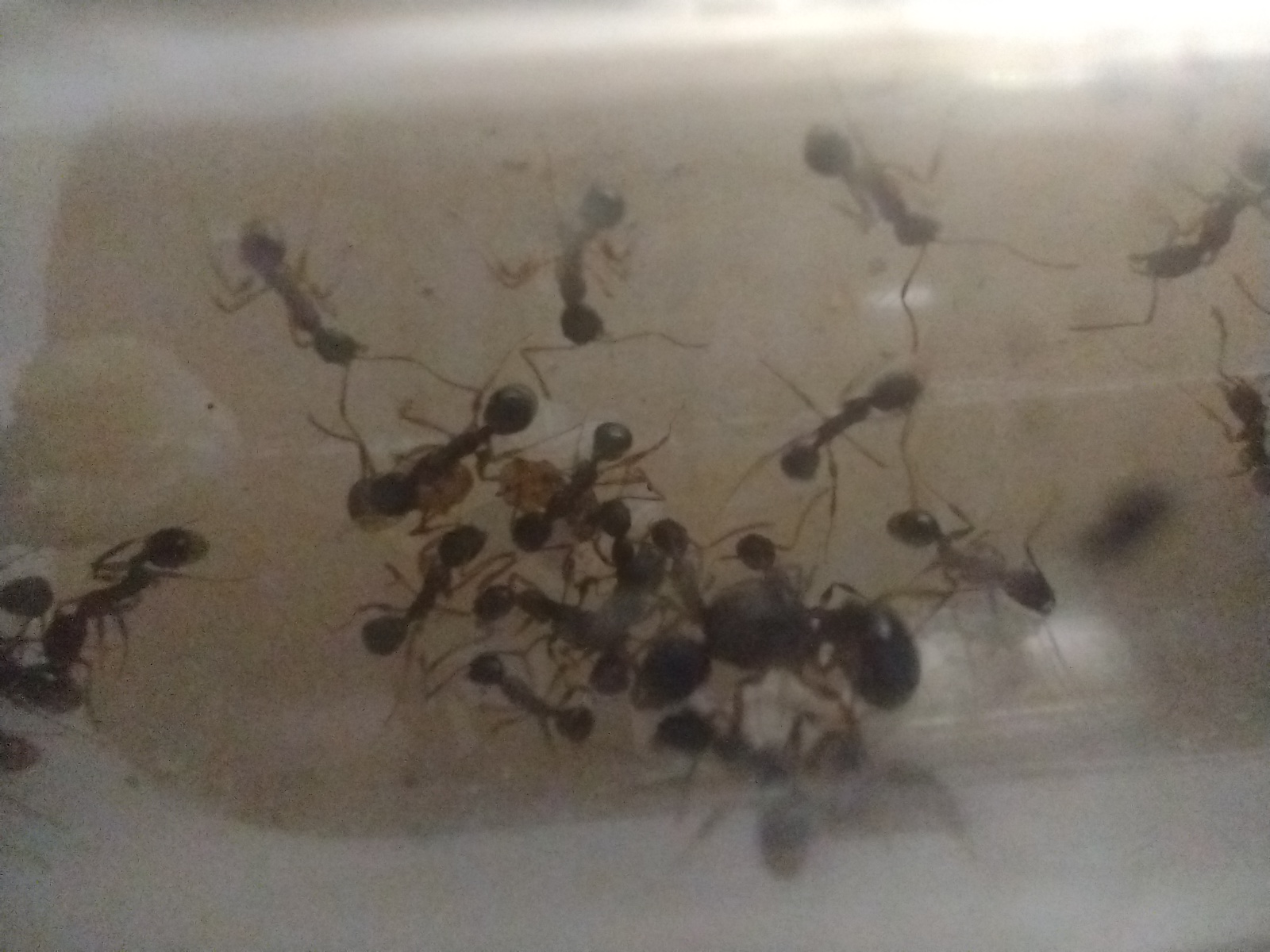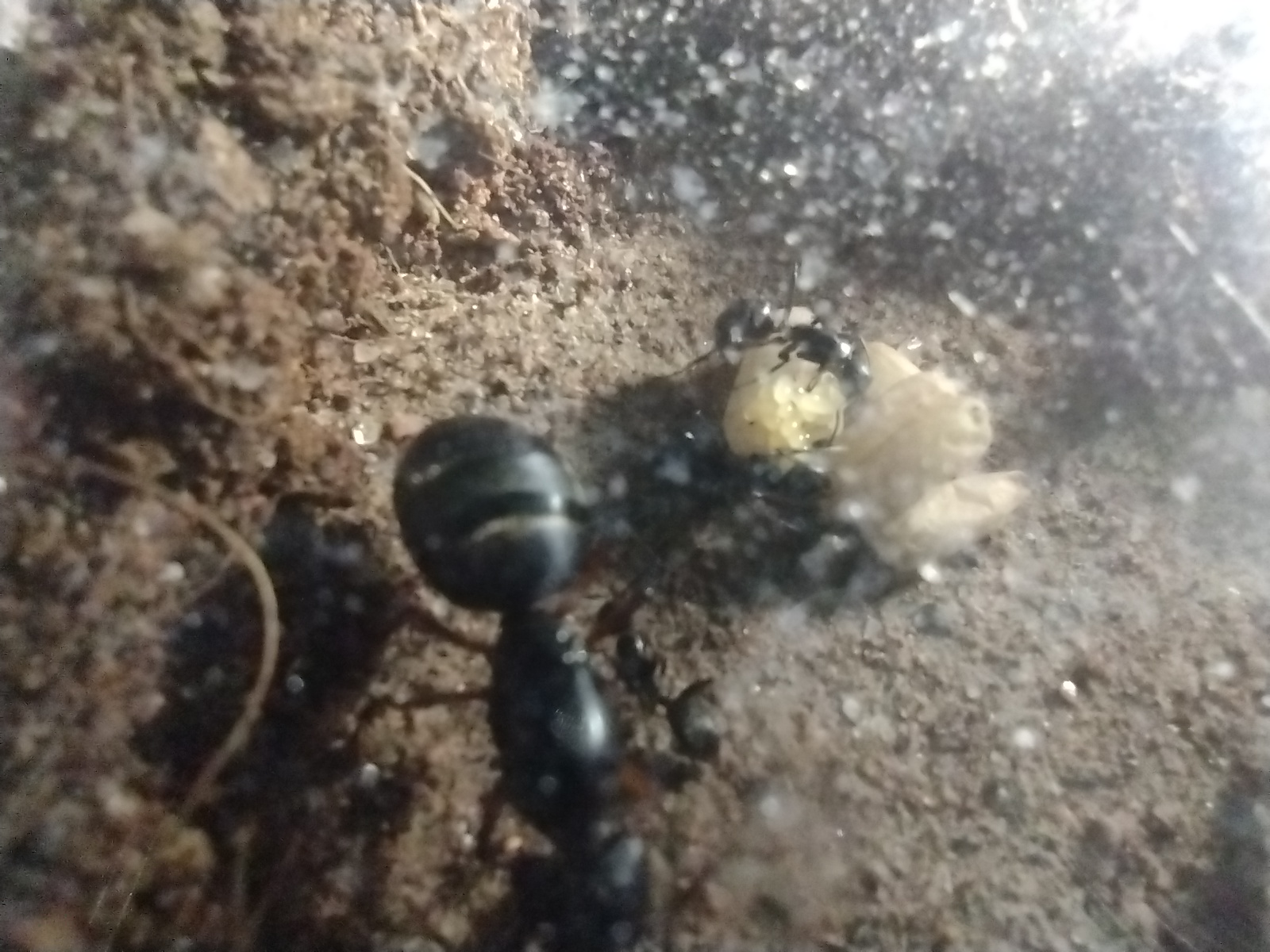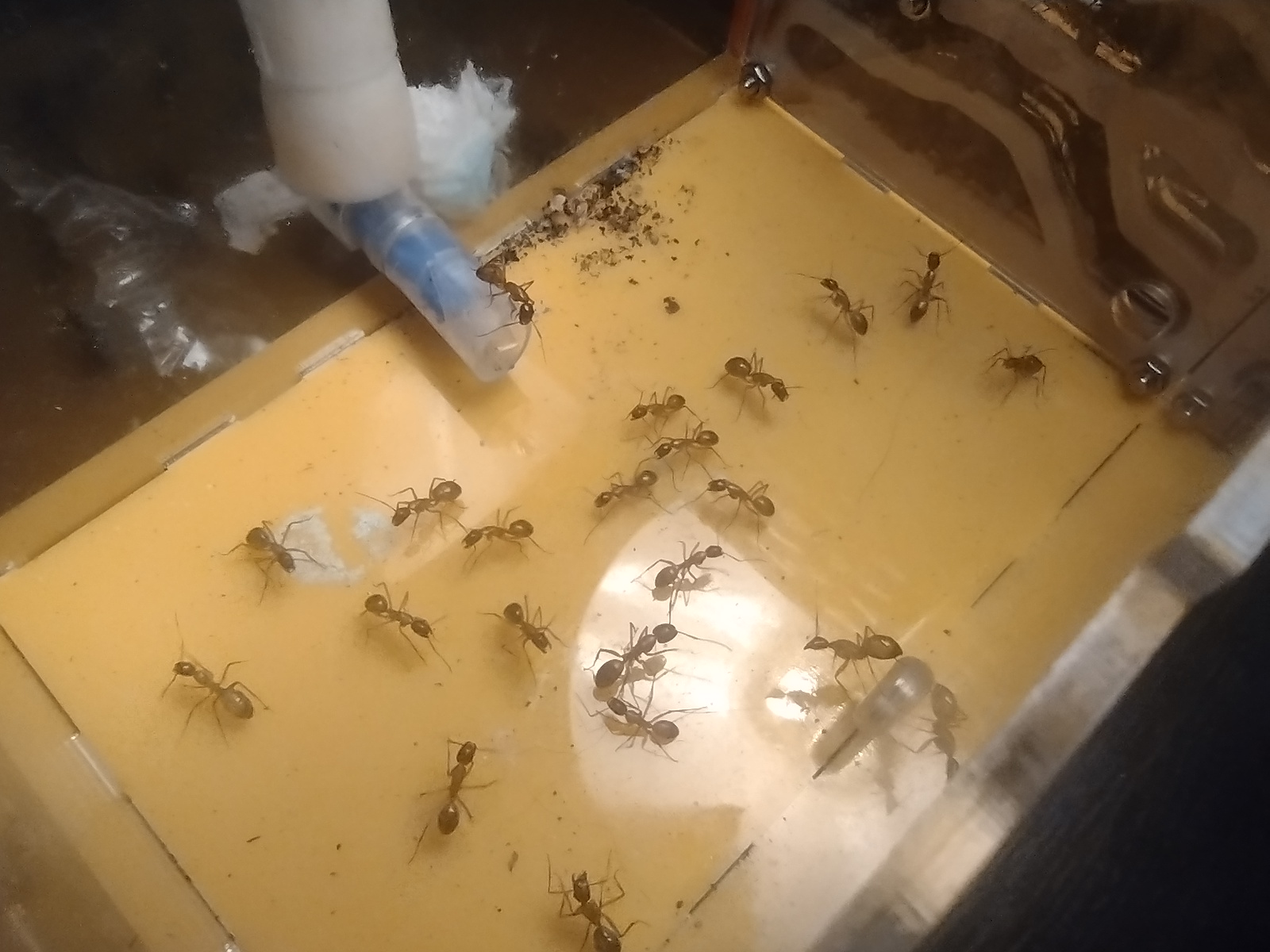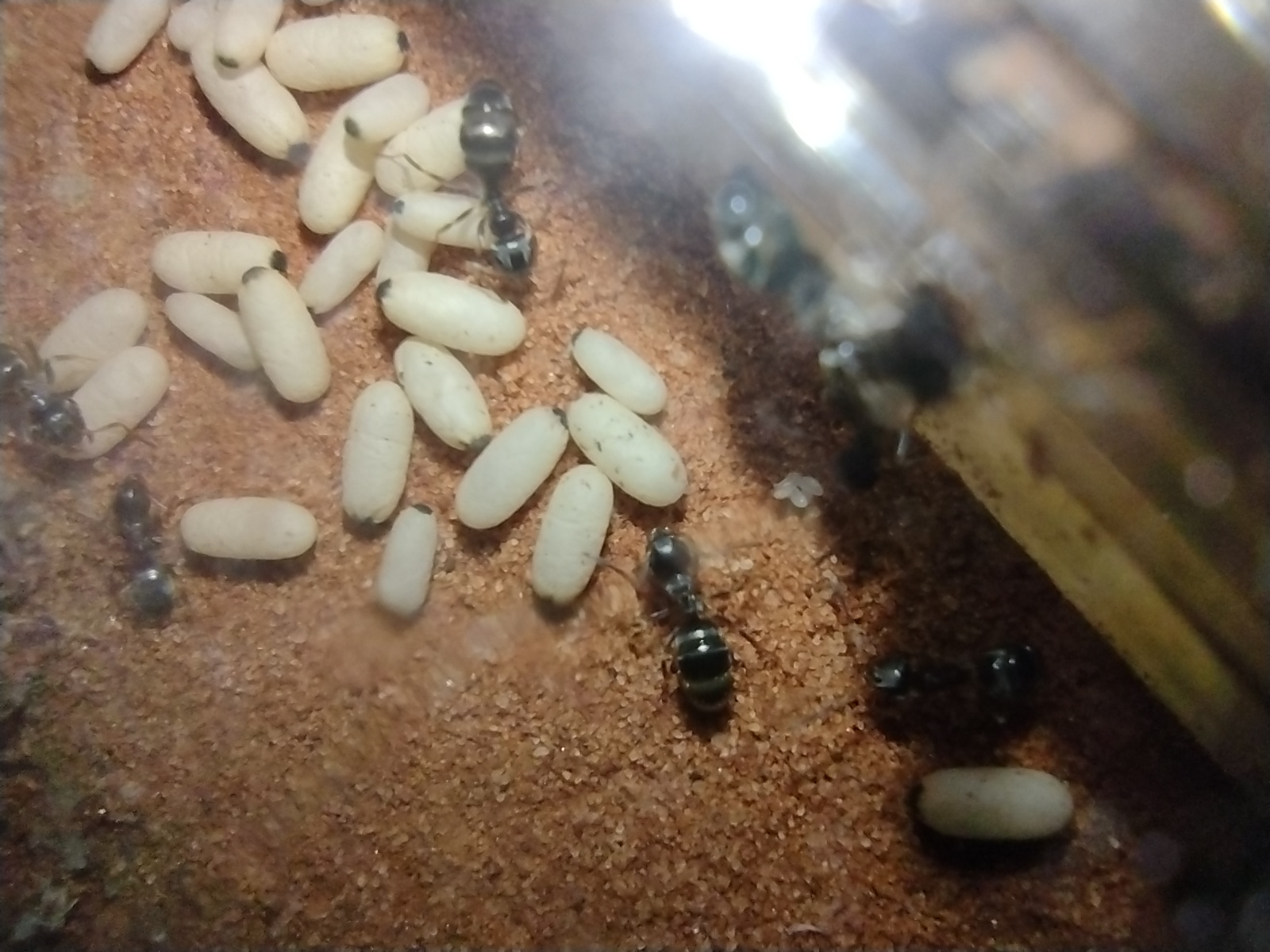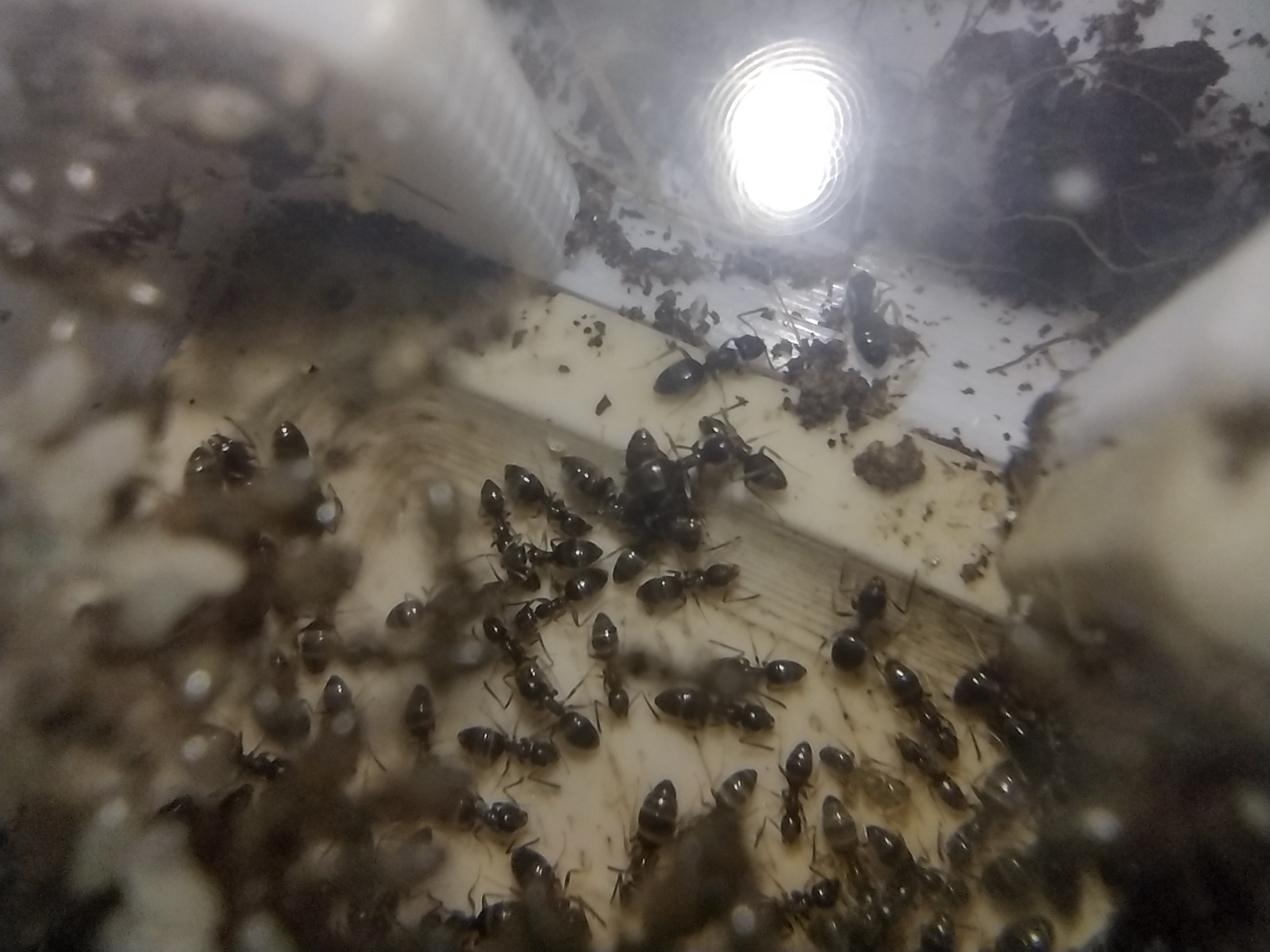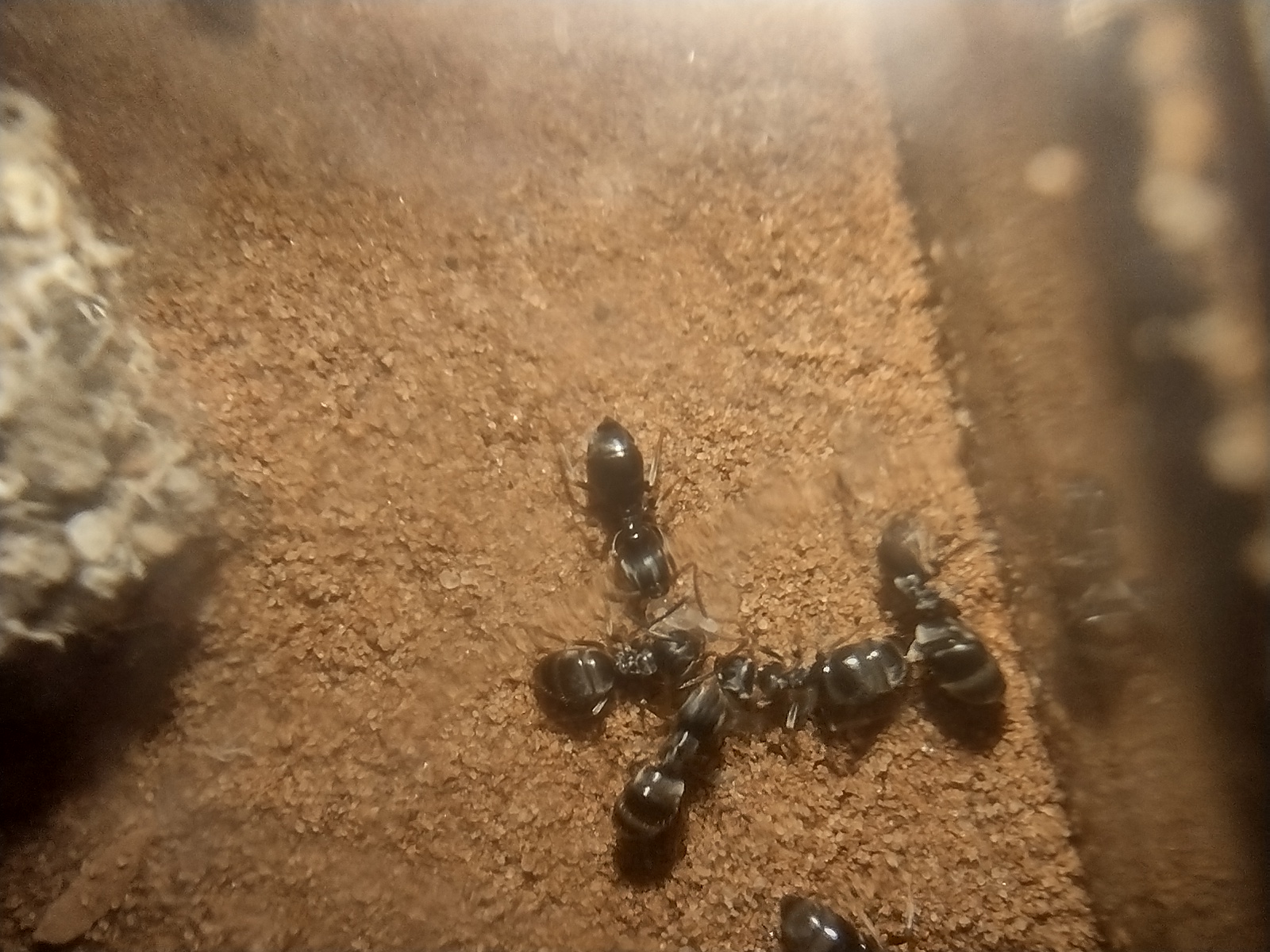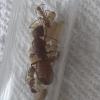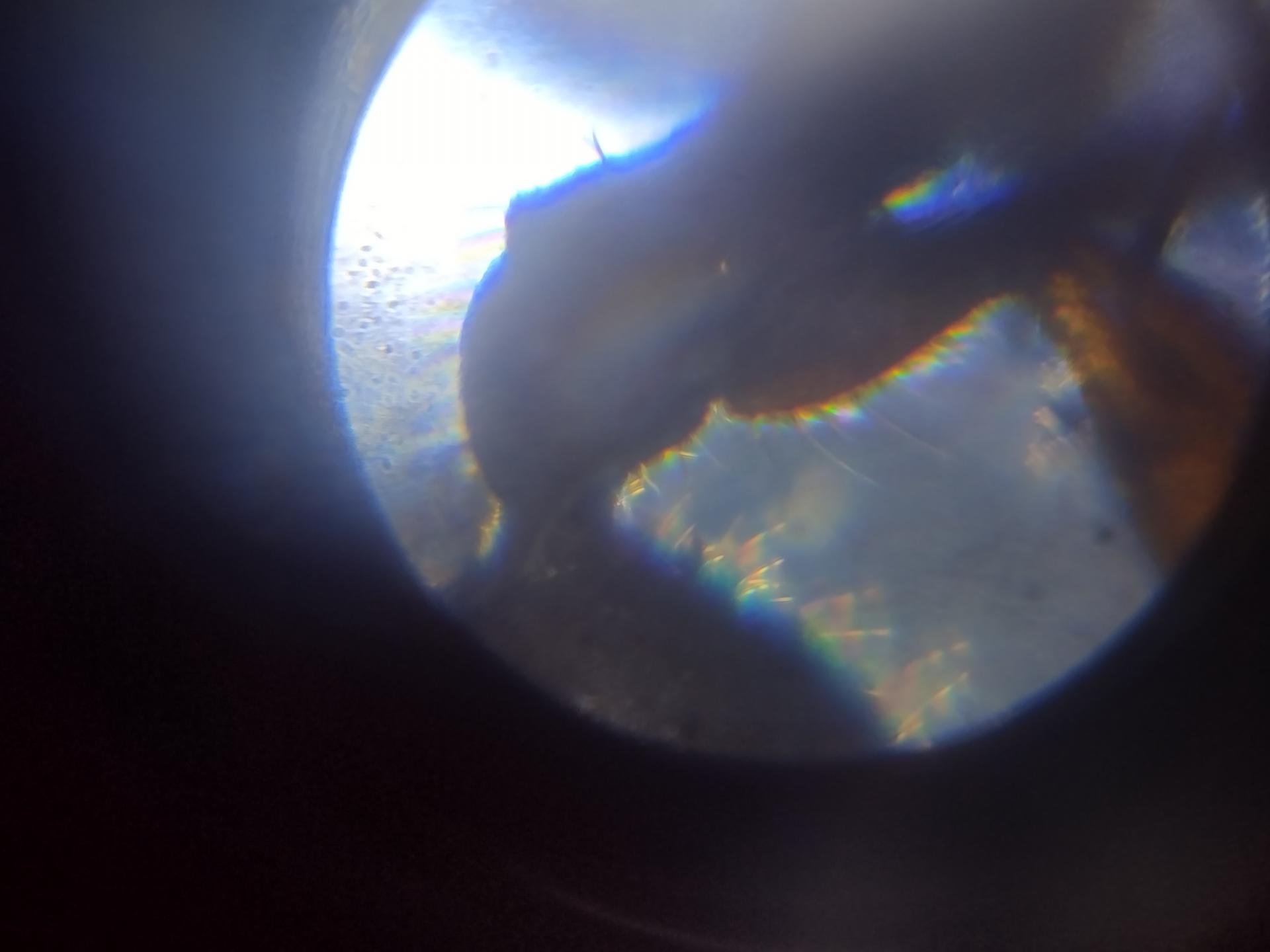1. Monomorium minimum.
They are in a natural island setup so I won't update them often.
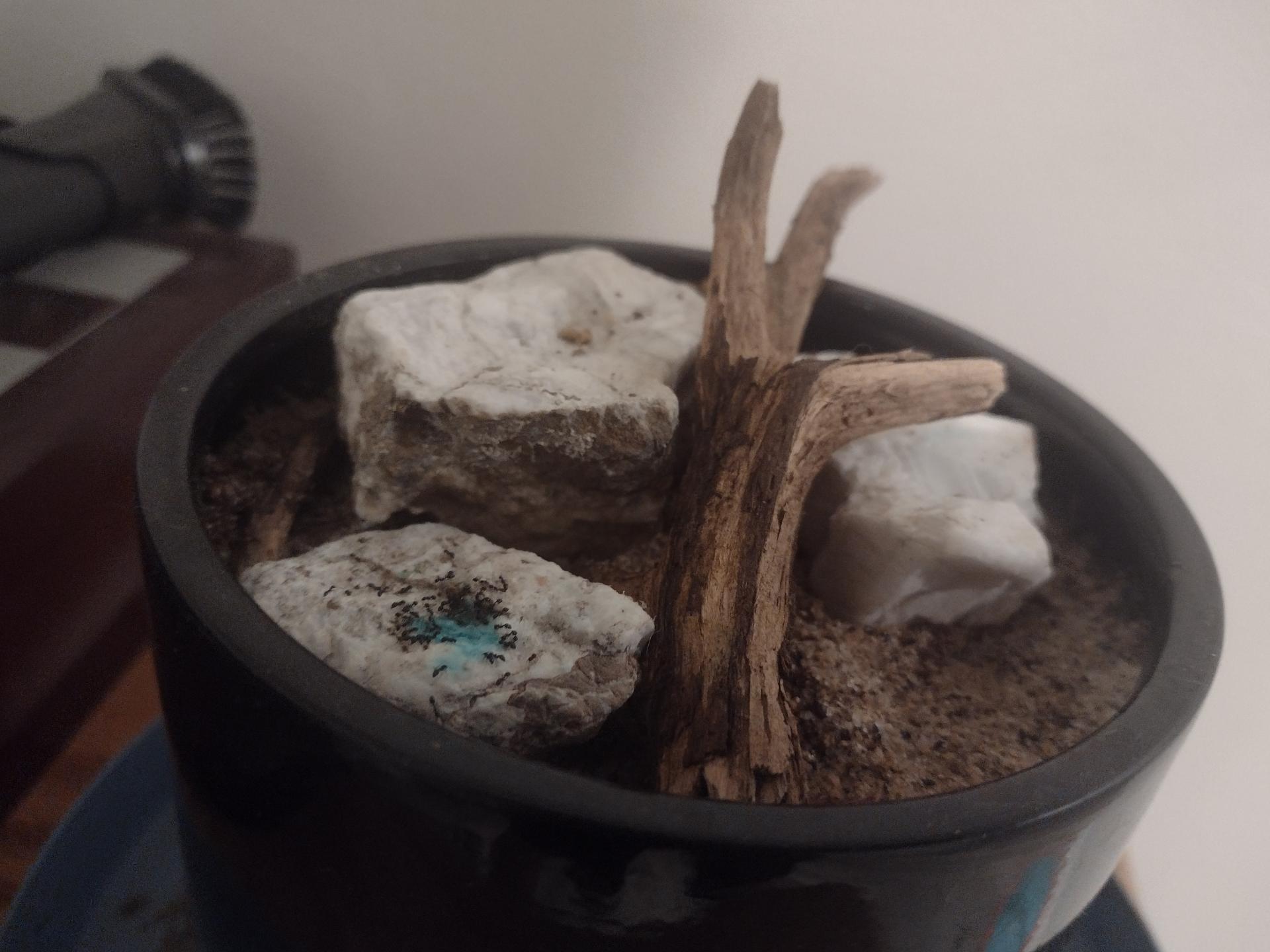
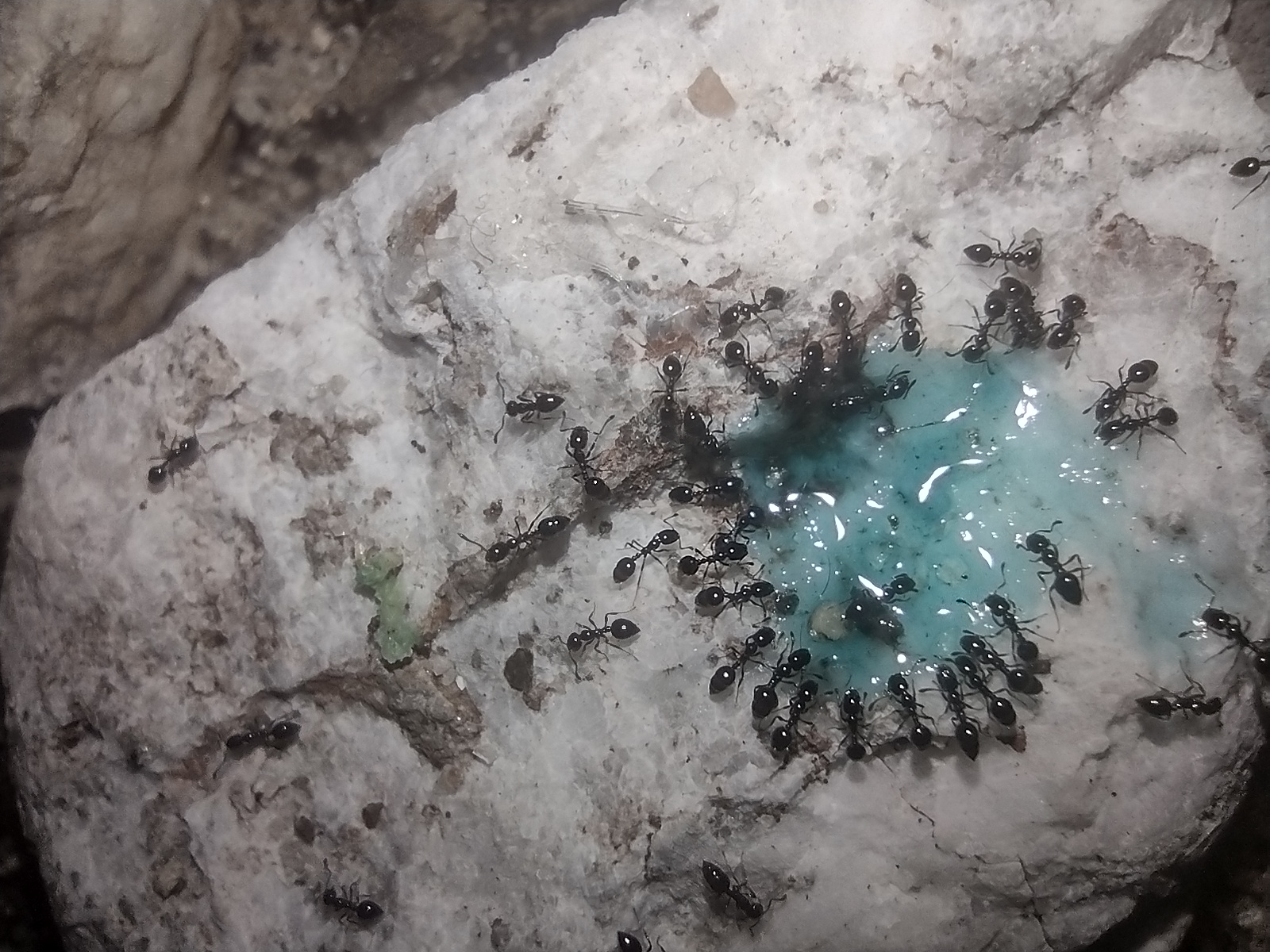
2. Aphaenogaster sp
I have 6 colonies that may be different species . The main three that I will be keeping. First, the bottle colony (jar colony would be better) they have been in a peach jar since September last year. They have many workers, during large feedings they can get up to 20-30 workers on the surface. They are in a naturalistic setup so I won't update them as much.. Second, a small 20+ worker colony that is in a tube and tubes setup and is growing fast. Last, my little brother's colony has been keeping ants for just over 3 months now. They grew at an incredibly fast rate once I gave it to him but then once they hit around 40 workers they got sick and we were able to save the queen don't brood and 5 workers. A week later we brood boosted them and they are about 20 now and growing fast. Right not their in a esthetic ants mini out world
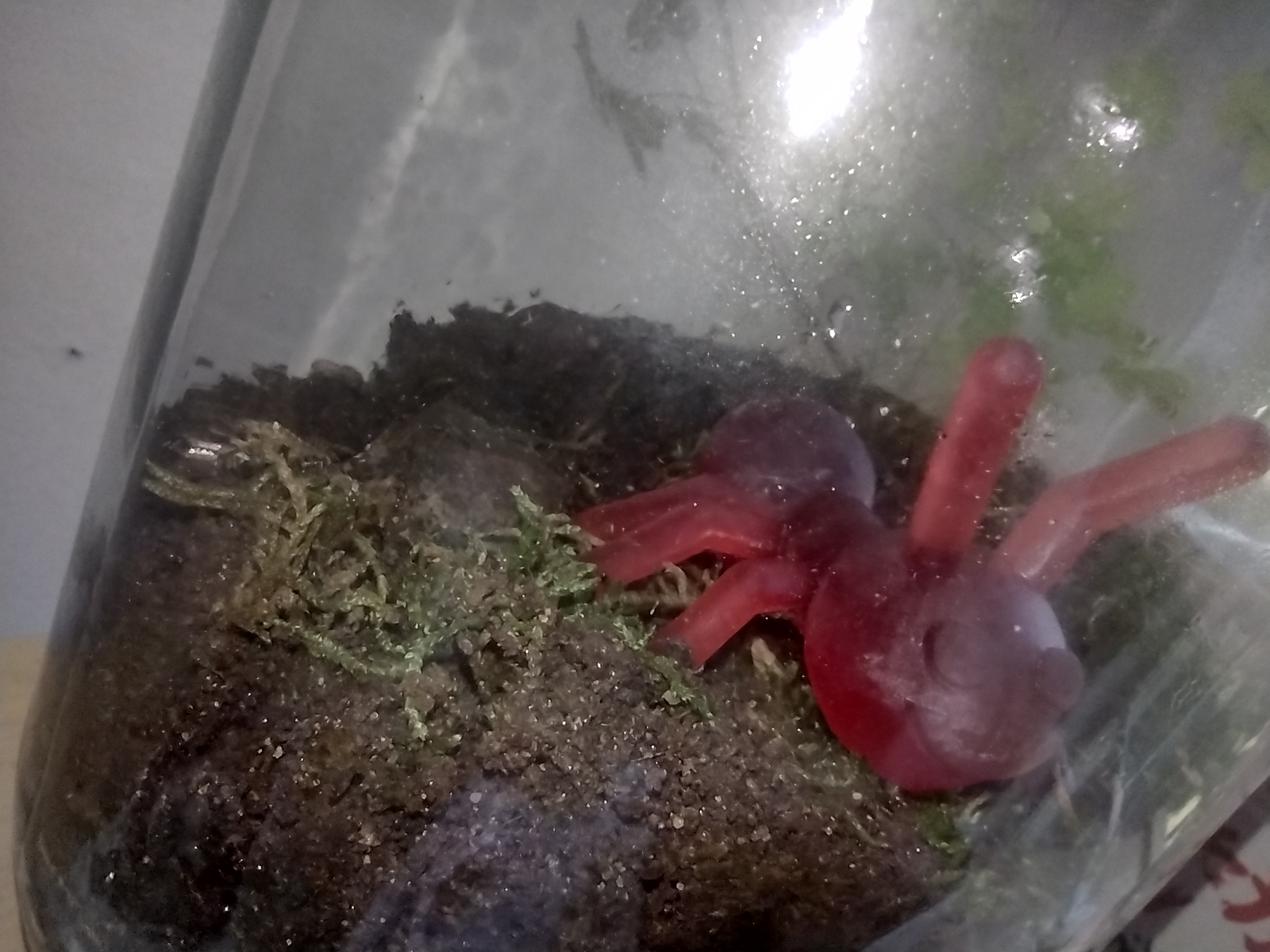
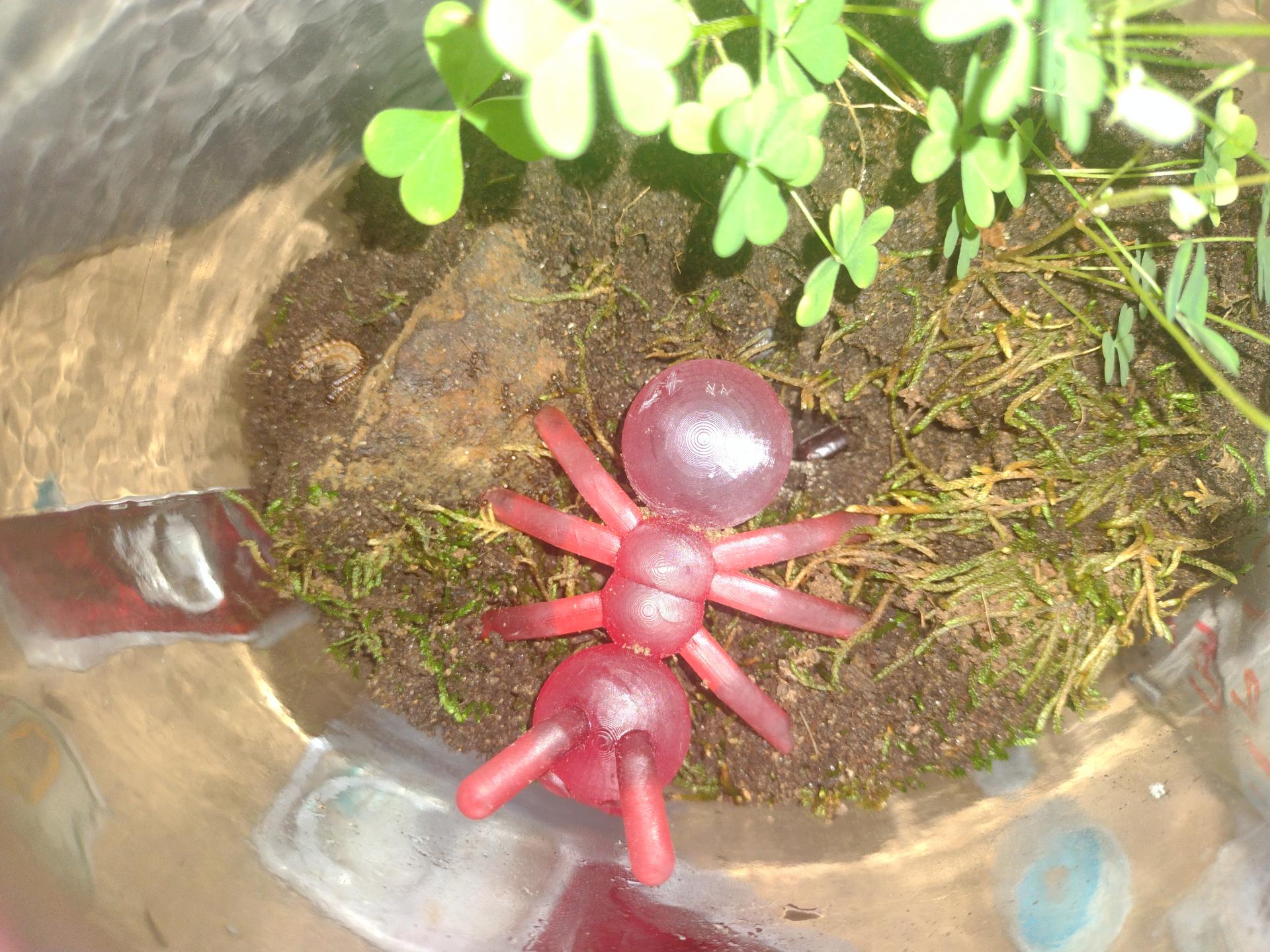
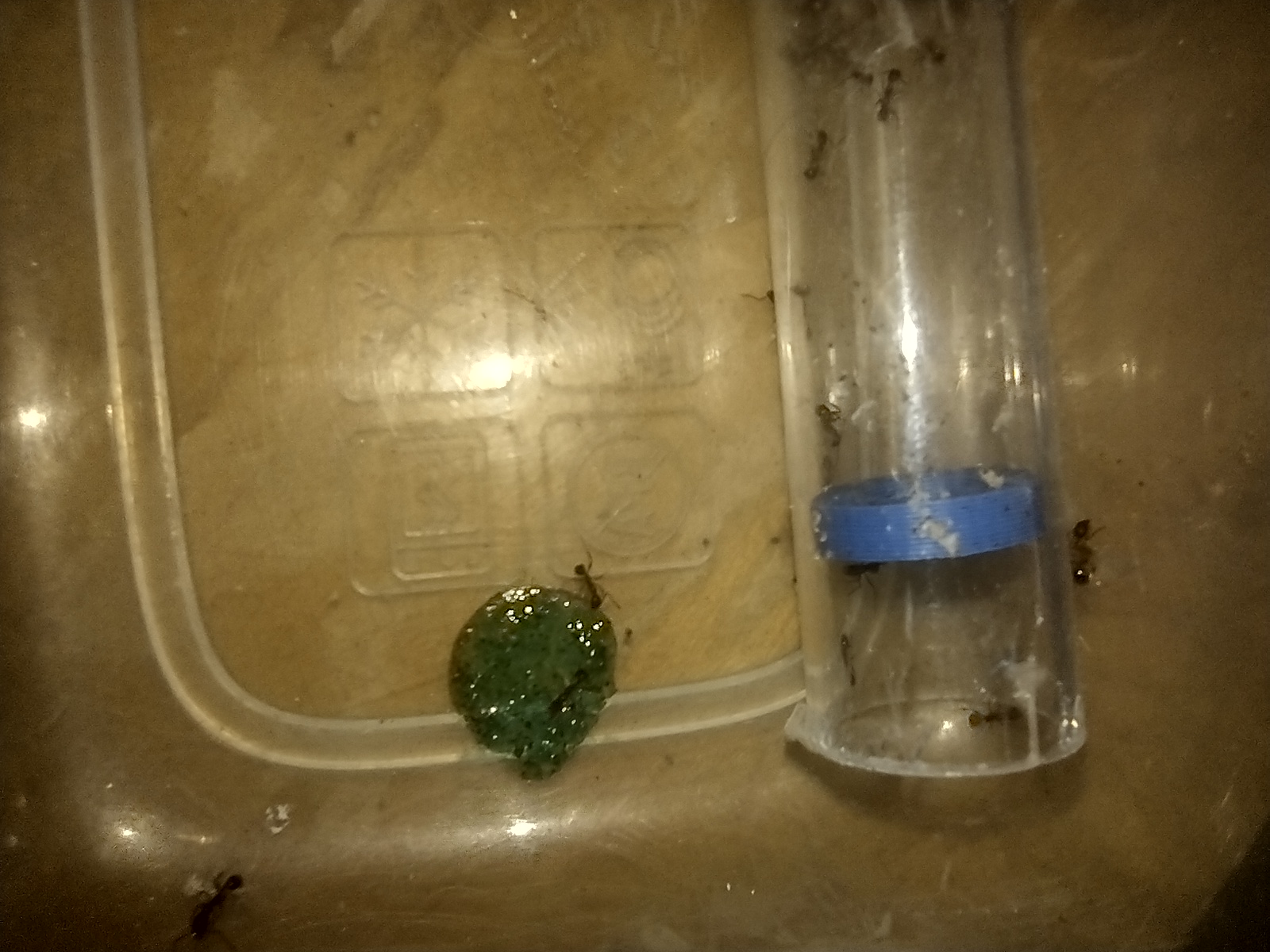
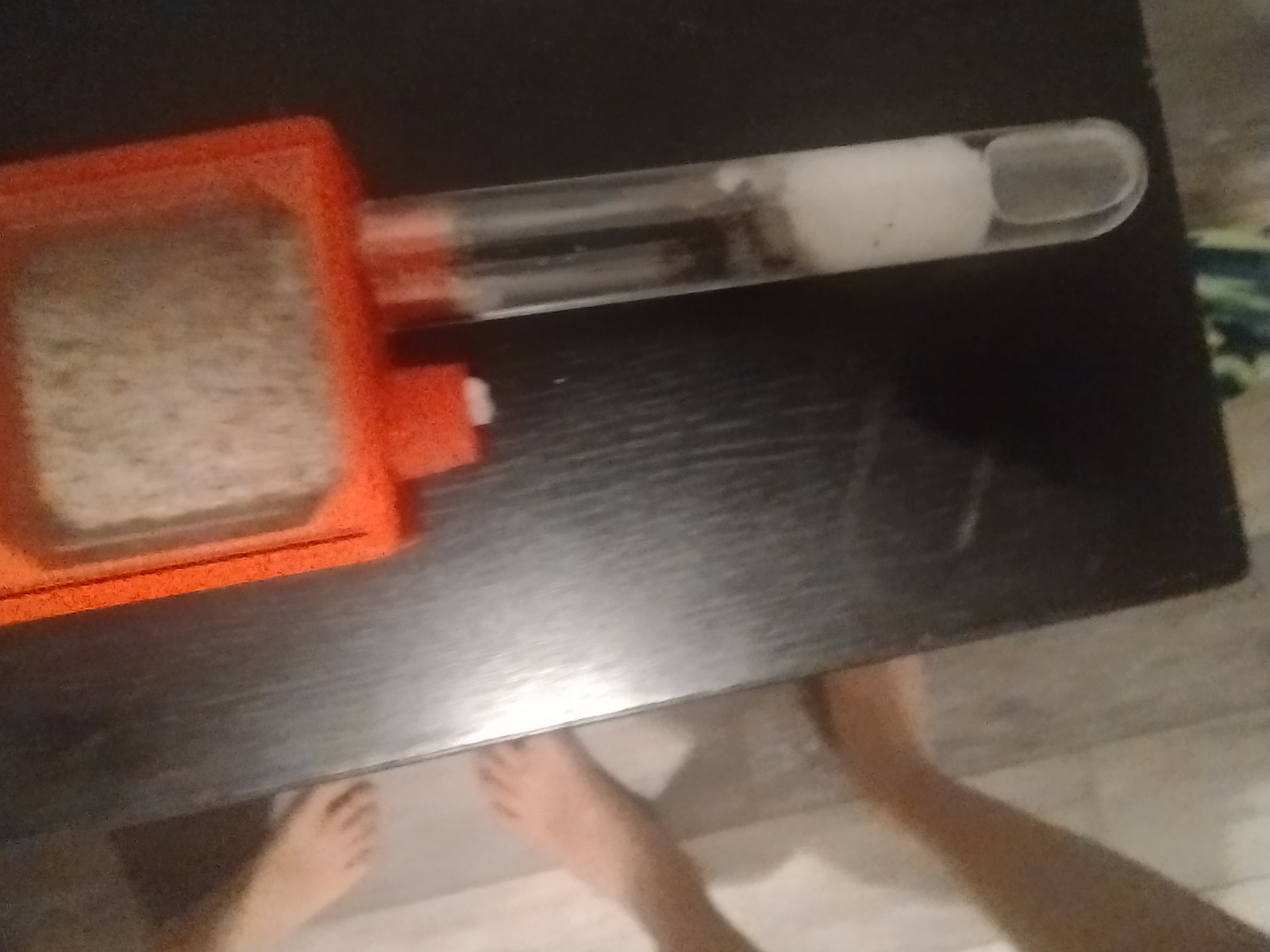
3. Tapinoma sessile
I have one colony that has ~8 queens and a few hundred workers. They are in a formisquarium connected to a wakoshi out-world, but Tapinoma sessile are so grateful for the nest I gave them that they moved mostly into the tube.
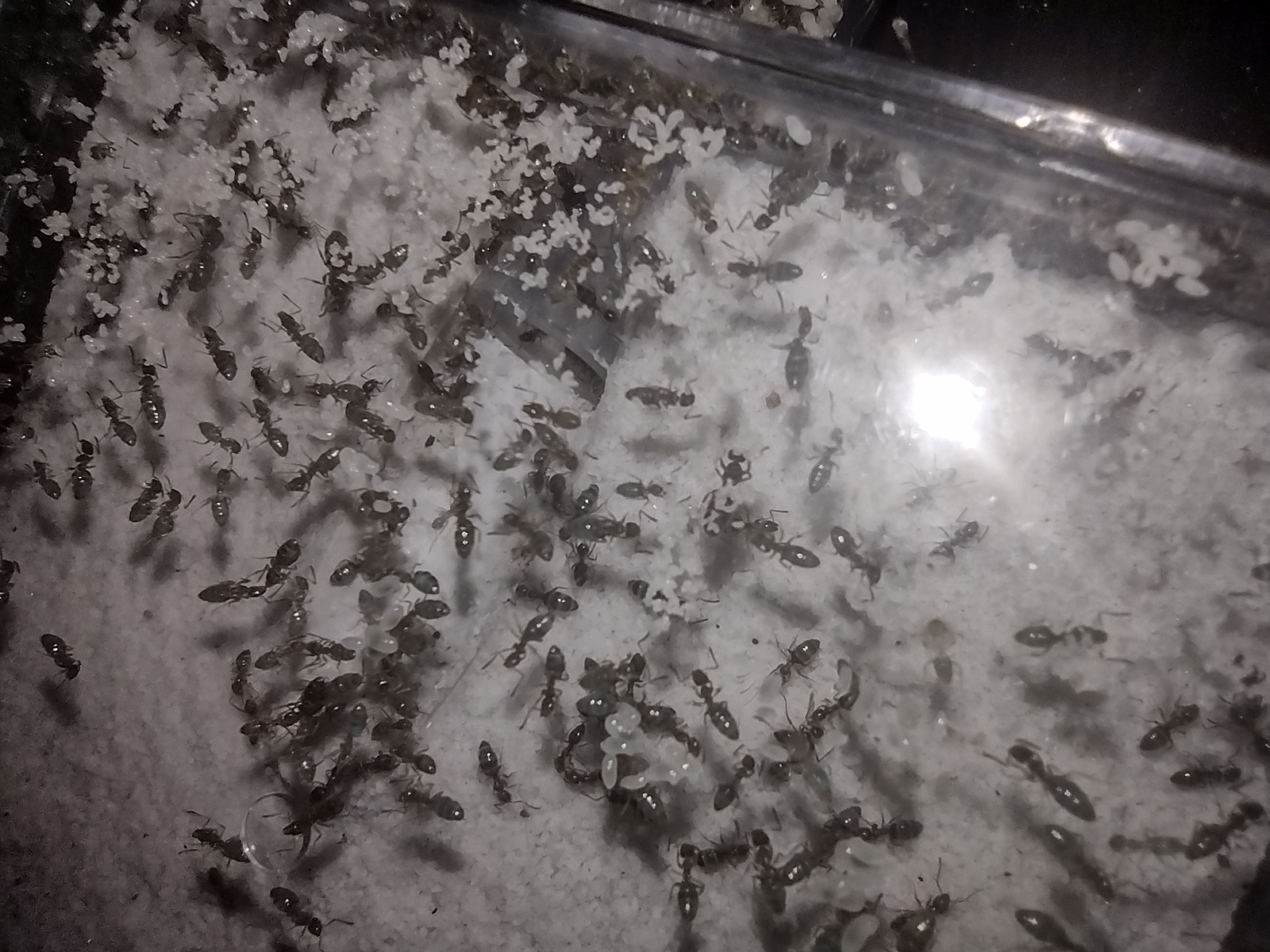
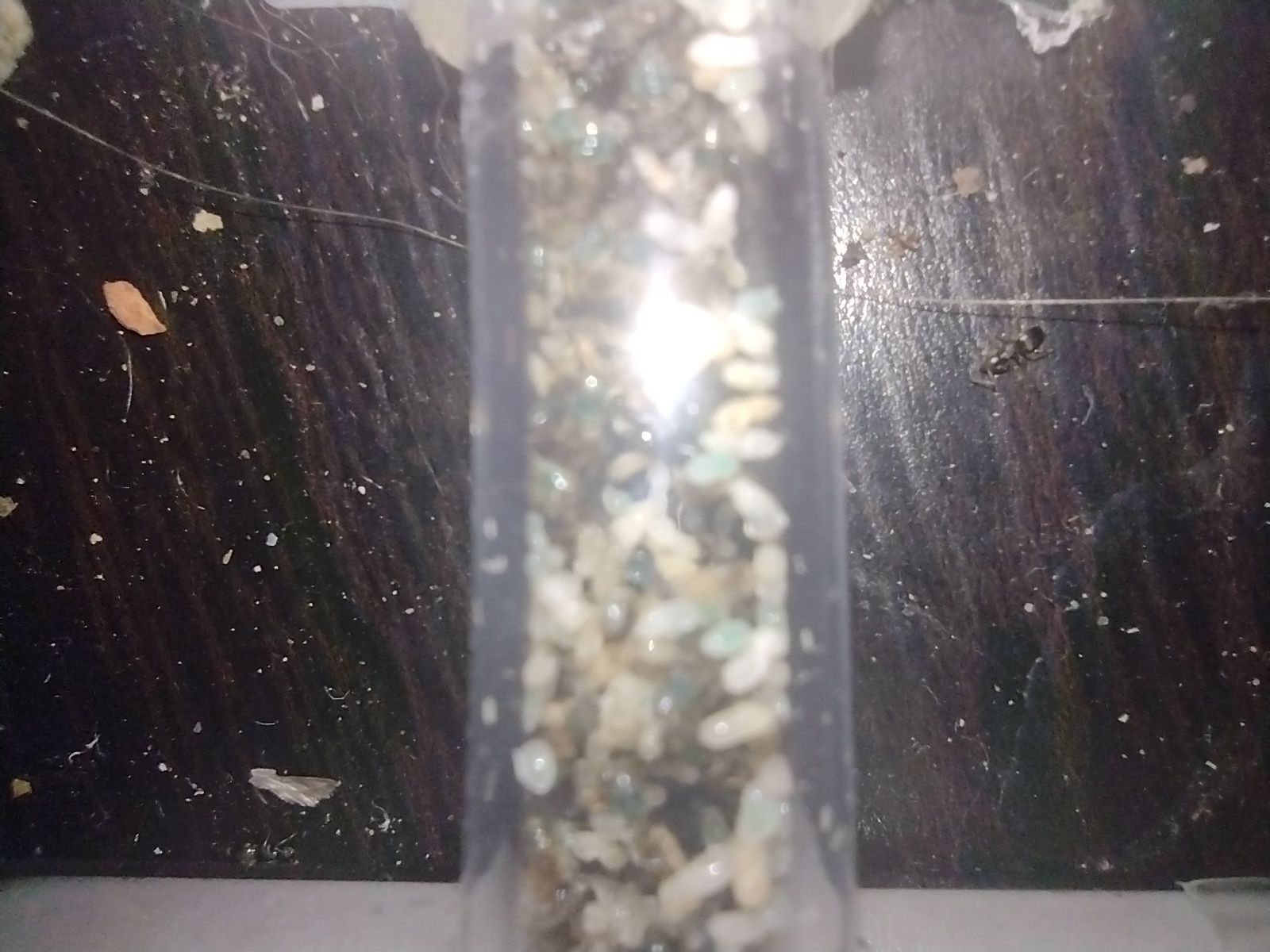
4. Tetramorium immigrans
I have two colonies but one is up for sale. The one I'm keeping has ~30 workers and is in a small wakoshi gypsum nest. They are growing fast and I love how they have polymorphism but all the same shape.
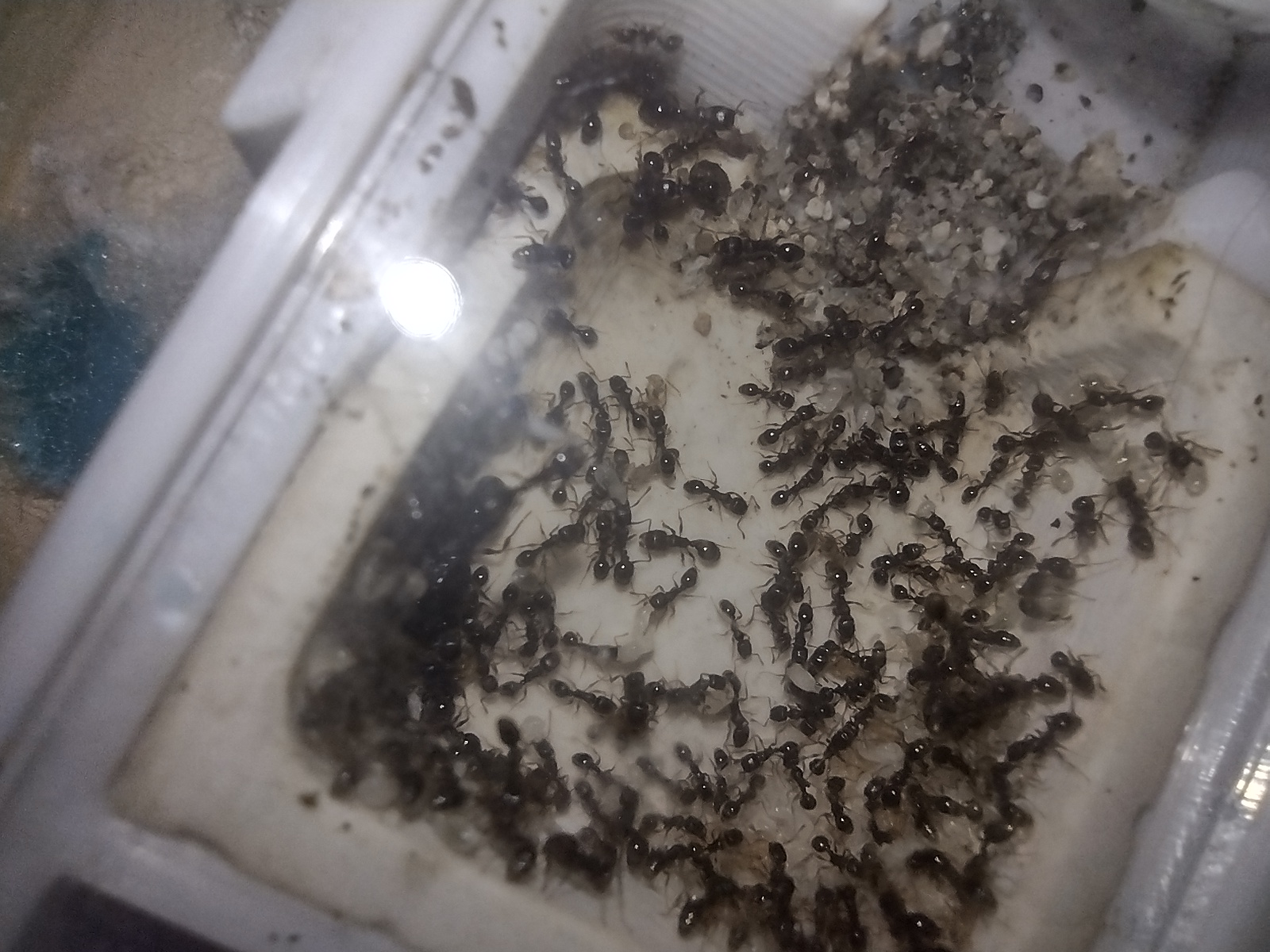
5. Pheidole tysoni
They are in a wakoshi Venus mini; they mostly inhabit one test tube but have a satellite nest in the other. They love all foods I give them and grow at an incredibly fast rate. They are easily one of my favorites.
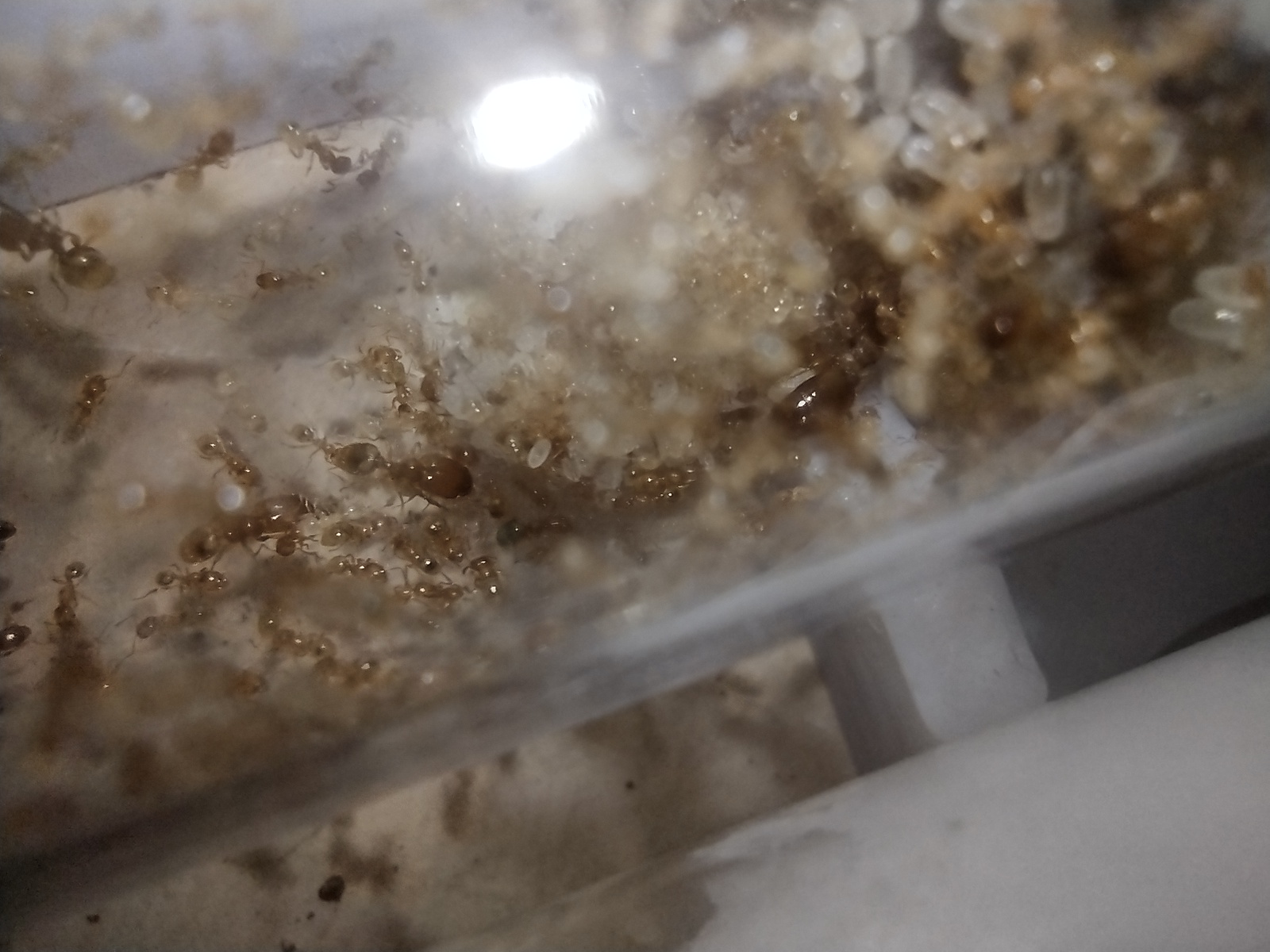
6. Temnothorax sp
They are probably ambiguus or curvispinosus they are so cute with one queen and about two dozen workers. How do you ID them?
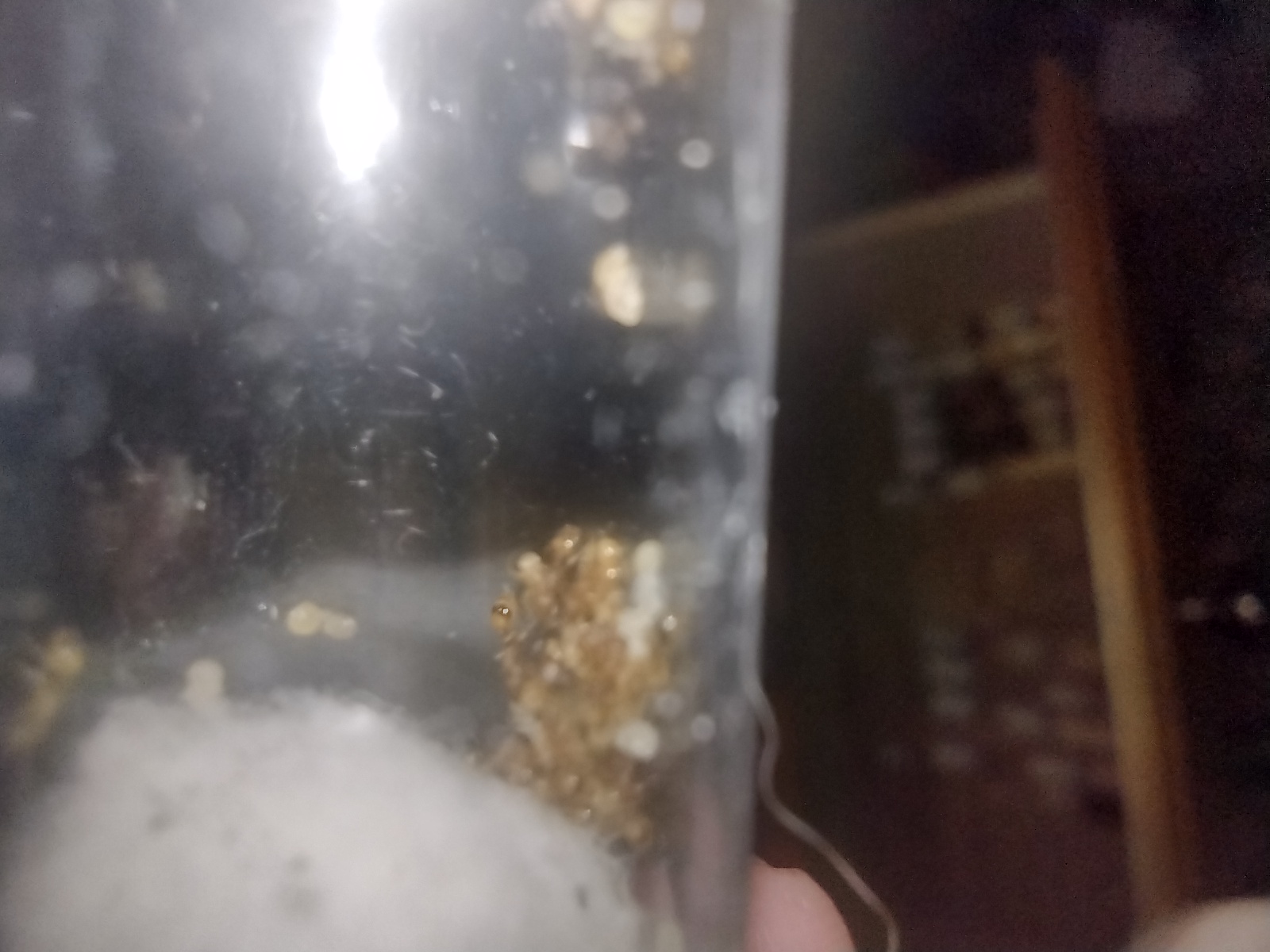
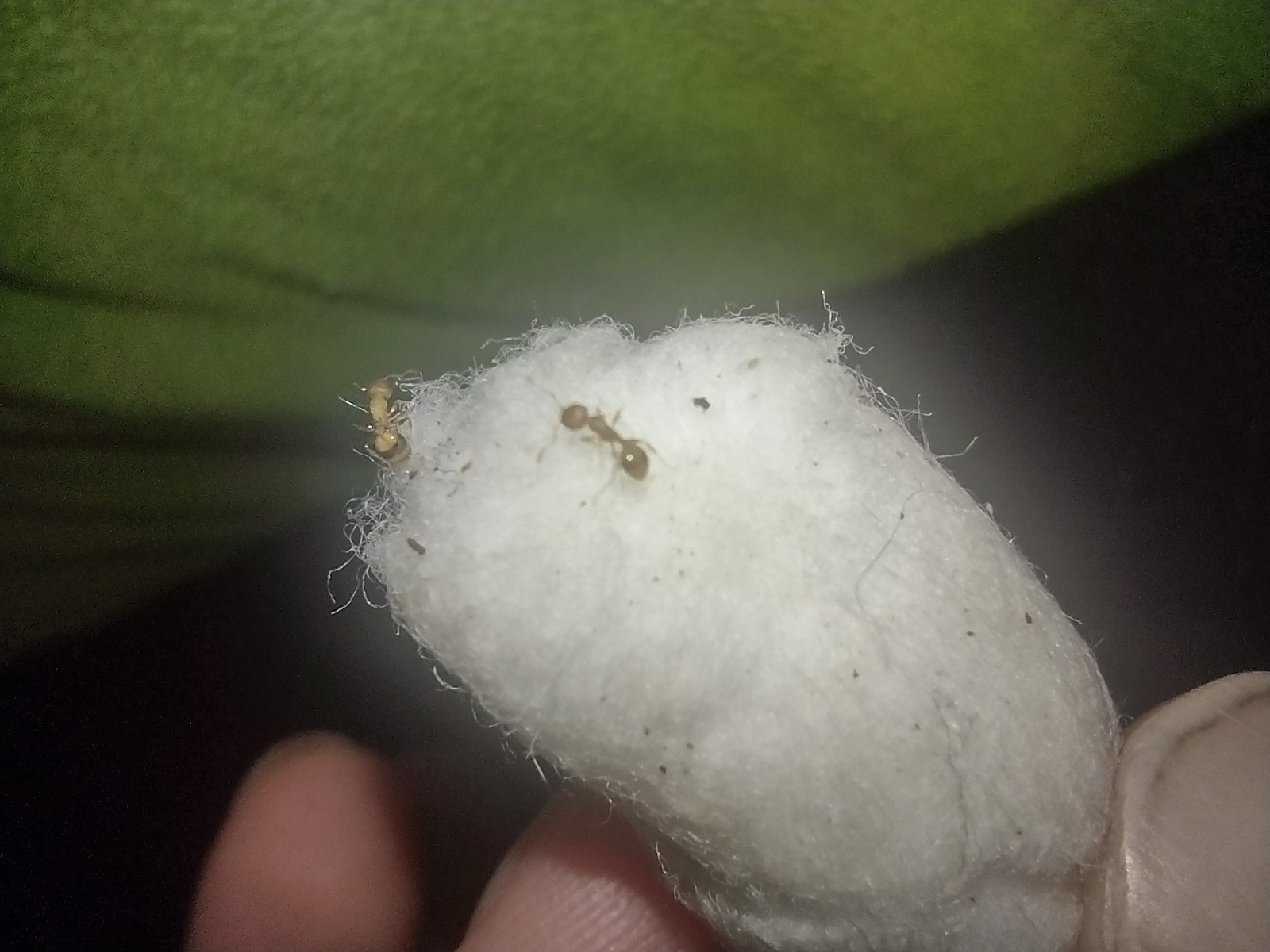
7. Parasitic Lasius sp (probably aphidicola)
I have two queens with host workers, one with 10 hosts and about 10 cocoons with a large pile of biological eggs. I will give them more cocoons soon. The other with ~30 workers with even more cocoons with a pile of medium larvae and huge pile eggs. I'm probably going to sell the small one.
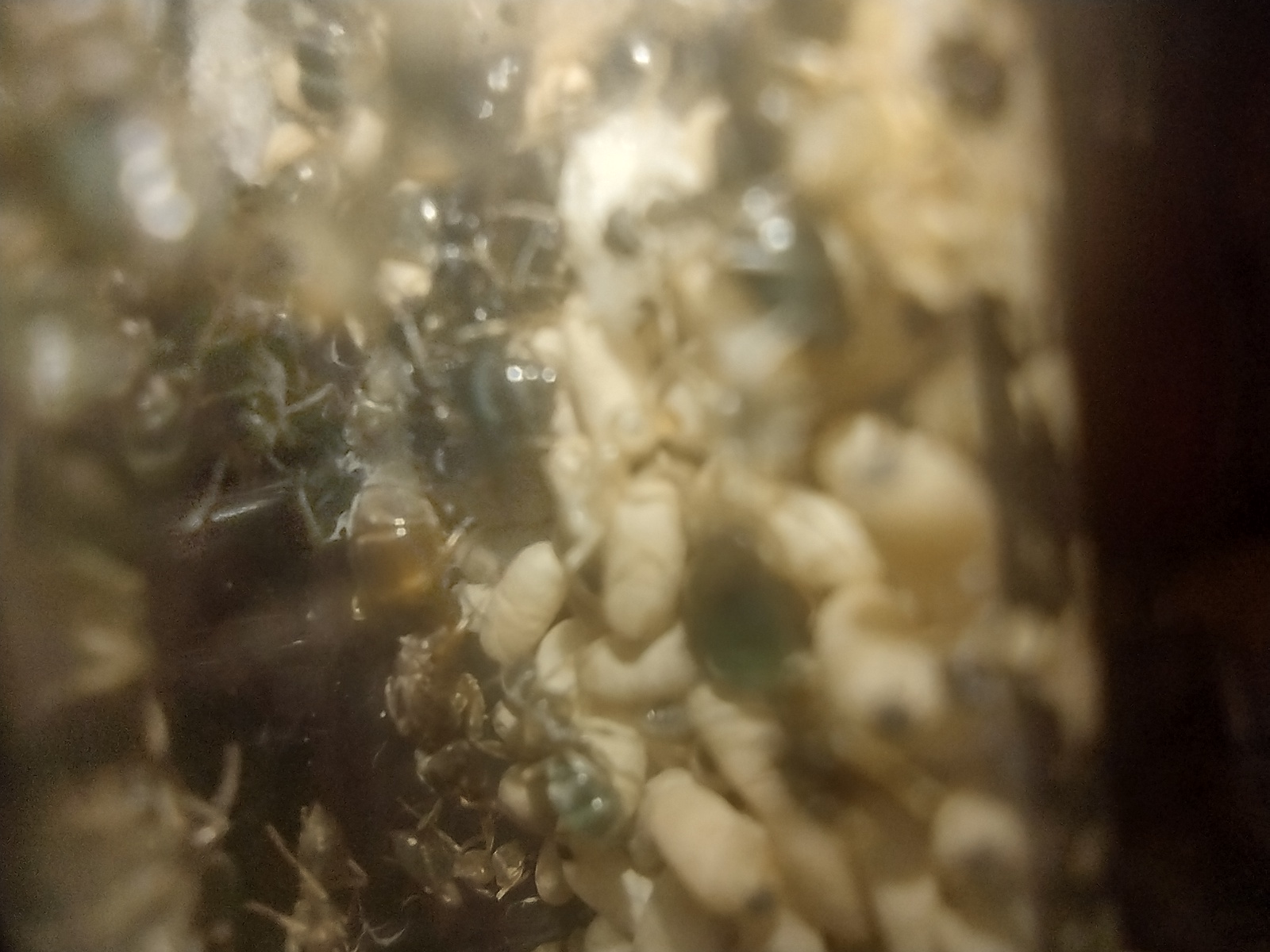
8. Camponotus colonies
I have two one ~70 worker Camponotus Castaneus colony and one small 5 worker colony. I still don't know the exact species they look like Pennsylvanicus but the queen has red on her underside so I don't know
(First large major!!)
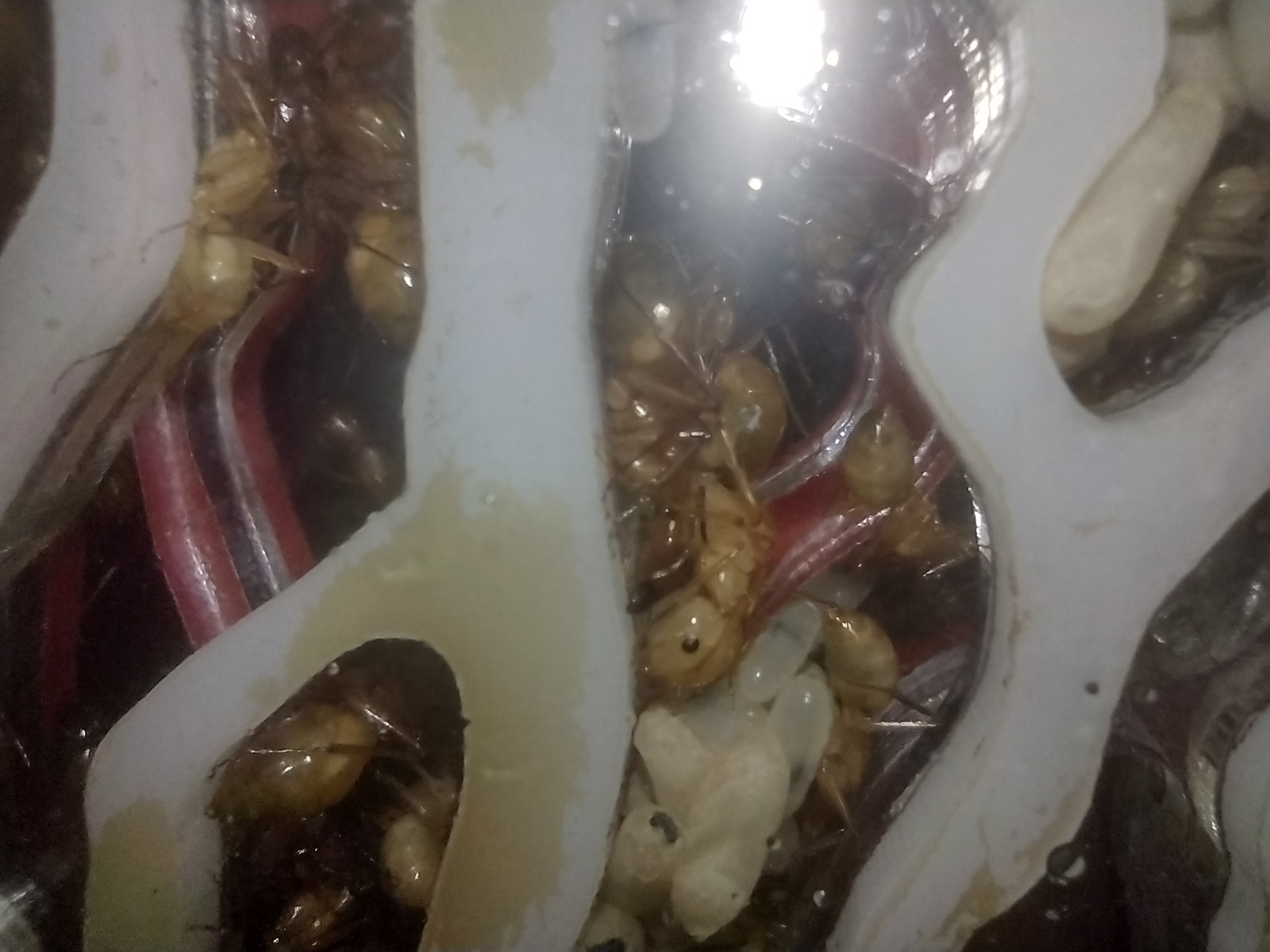
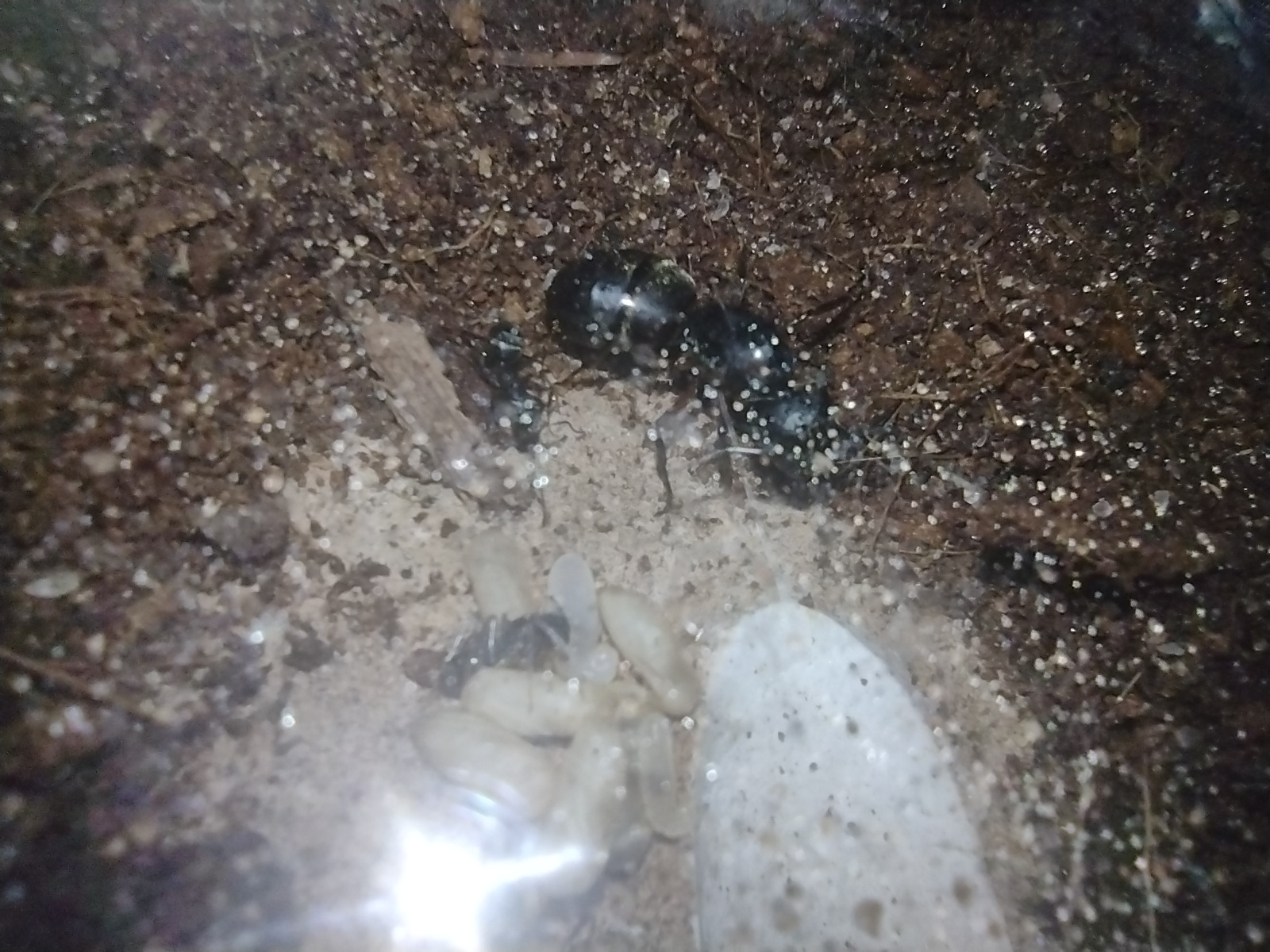
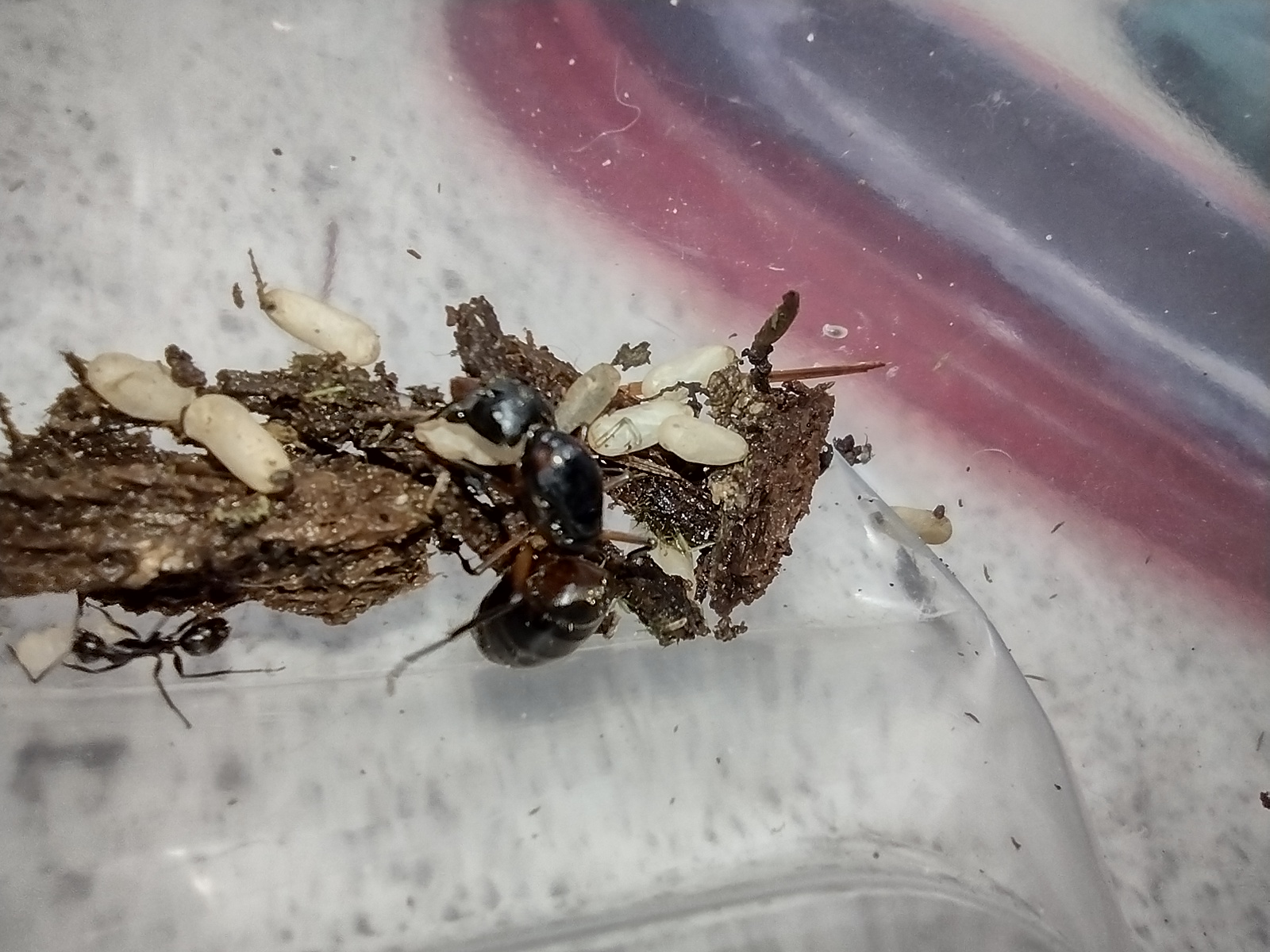
Queens
4 mymrica q
3 Pheidole queens together, one is a different species
1 Camponotus Castaneus
2 Formica Pallidefulva
2 Tetramorium immigrans
I have ponera and Hypoponera but they are on my cryptic ant journal.


